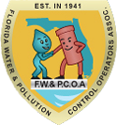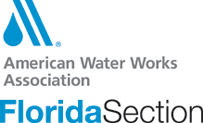Category Archives: Current News
ACPA Announces Concrete Pipe Week 2023
The American Concrete Pipe Association (ACPA) has announced that this year’s Concrete Pipe Week will be held Sept. 24-30, 2023. Concrete Pipe Week recognizes the significance of concrete pipe and box culverts and affirms their contributions to building long-lasting and sustainable communities and infrastructure.
The 2023 theme is “Engineered Strength. Proven Resilience. Undeniable Sustainability.” This reflects the overall value, position, and benefit of both reinforced concrete pipe and box culverts.
“Concrete Pipe Week celebrates the nation’s resilient infrastructure,” says Steven Hawkins, AIA, president of ACPA. “Like oxygen, the infrastructure hidden beneath the places where we travel, work, and play, is largely taken for granted until the moment we don’t have enough. Concrete pipe is central to the infrastructure in the United States and has proven to be remarkably reliable for more than a century. We believe this is the reason to celebrate our industry’s contribution to the nation’s resilient infrastructure.”
The week-long Concrete Pipe Week celebration includes activities and events at the national, state, and local levels that parallel this year’s theme.
Concrete Pipe Plant Virtual Tour
Take a trip to Savannah, Ga., to tour the recently renovated facilities of Diamond Concrete Products, an ACPA member. Virtual tour attendees will gain insights into the production process and have a chance to see the engineered strength of a pipe firsthand.
Complimentary Webinars
Three free webinars are being offered to learn more about concrete pipe and the resources available from ACPA and its affiliated state associations. Presentations include:
- Concrete Pipe: Proven Resilience
- Concrete Pipe: Undeniable Sustainability
- Finding Resources That Work for You
Register for the virtual tour and webinars at concretepipeweek.org/activities.
State Proclamations
Governors and other elected officials from around the U.S. share their support and pride in concrete pipe by signing state declarations for Concrete Pipe Week. Declarations, pictures, and public sentiments are shared leading up to and during the celebration. In addition to the online activities, ACPA members from across the country are hosting in-person plant tours and customer appreciation events, and offering educational opportunities.
“While Concrete Pipe Week allows us to take pride in our products,” says Michael Kremer, ACPA vice president of marketing, “it goes beyond our members. We also celebrate the contributions of all our partners, including public work agencies; transportation departments; contractors; cement, steel, form, casting, sand, and rock producers; and the trucking industry that transports our products. The week is about the entire value chain and pipeline of suppliers, producers, and installers who take pride in building a resilient and sustainable future.”
For more information about Concrete Pipe Week 2023 visit concretepipeweek.org.
About the American Concrete Pipe Association
The ACPA represents the concrete pipe industry in all matters affecting the industry’s welfare. The ACPA members contribute to the improvement of the environment by producing quality concrete pipe that’s engineered to provide a lasting and economical solution to drainage and pollution problems.
For more information about the association go to www.concretepipe.org.
Court Pauses Cybersecurity Rule for AWWA, NRWA Water Utility Members Following Legal Challenge
The U.S. Court of Appeals for the Eighth Circuit granted a request from the American Water Works Association (AWWA) and the National Rural Water Association (NRWA) to stop the U.S. Environmental Protection Agency’s Cybersecurity Rule from going into effect until the current case challenging the rule has been decided.
The Court’s decision applies to all AWWA and NRWA members in the United States. AWWA and NRWA requested that the court pause the rule during a legal challenge from three states so that their members would not have to undertake costly changes to their operations until the court decides if the rule is legally valid. The stay applies until further notice from the court.
“AWWA is pleased the court recognized the importance of halting the Cybersecurity Rule for our utility members as it reviews the legality of the rulemaking process,” said David LaFrance, AWWA chief executive officer. “AWWA strongly supports efforts to strengthen cybersecurity in the water sector, but the Sanitary Survey Program is not the right tool for the job. We are grateful our viewpoint will be heard by the court and look forward to working together with EPA and others on a smart path forward.”
“NRWA commends the court for issuing this stay preventing EPA from enforcing the Cybersecurity Rule until it’s determined if it has been lawfully implemented,” said Matthew Holmes, NRWA chief executive officer. “While NRWA fully supports efforts to strengthen cybersecurity in small communities across the country, enforcing this regulation is not the best way to help small and rural systems, and could have costly and unnecessary consequences.”
AWWA and NRWA joined Missouri, Arkansas, and Iowa in a legal challenge to the rule because of concerns about the legal process and legality of the rule, concerns that the rule may create additional cybersecurity vulnerabilities for members, and concerns that states do not have appropriate resources, laws, rules, or procedures in place to adhere to the rule requirements. Specifically, in the absence of a viable primacy agency implementation framework, water systems were at risk of violations for which they are unable to prepare. There is also the risk that the cybersecurity vulnerabilities of these systems would be publicly available because they are being done through sanitary surveys, which could be accessed by malicious actors.
The public wasn’t given the opportunity to comment about EPA’s proposed approach before the rule was issued. By granting a stay, the court has prevented these risks to members while it reviews the legality of EPA’s rulemaking process.
Established in 1881, the American Water Works Association is the largest nonprofit, scientific, and educational association dedicated to managing and treating water, the world’s most vital resource. With approximately 50,000 members, AWWA provides solutions to improve public health, protect the environment, strengthen the economy and enhance our quality of life. To learn more, visit www.awwa.org.
The National Rural Water Association is the largest public drinking water and sanitation utility organization representing the interests of more than 31,000 water and wastewater utilities nationwide. NRWA provides training and technical assistance through 50 affiliated state rural water associations dedicated to supporting and promoting the water and wastewater professionals that serve small communities across the U.S. NRWA and the state affiliates provide training on operator certification, financial sustainability, environmental compliance, utility management, and governance to more than 80,000 water professionals annually. To learn more, visit www.nrwa.org.




